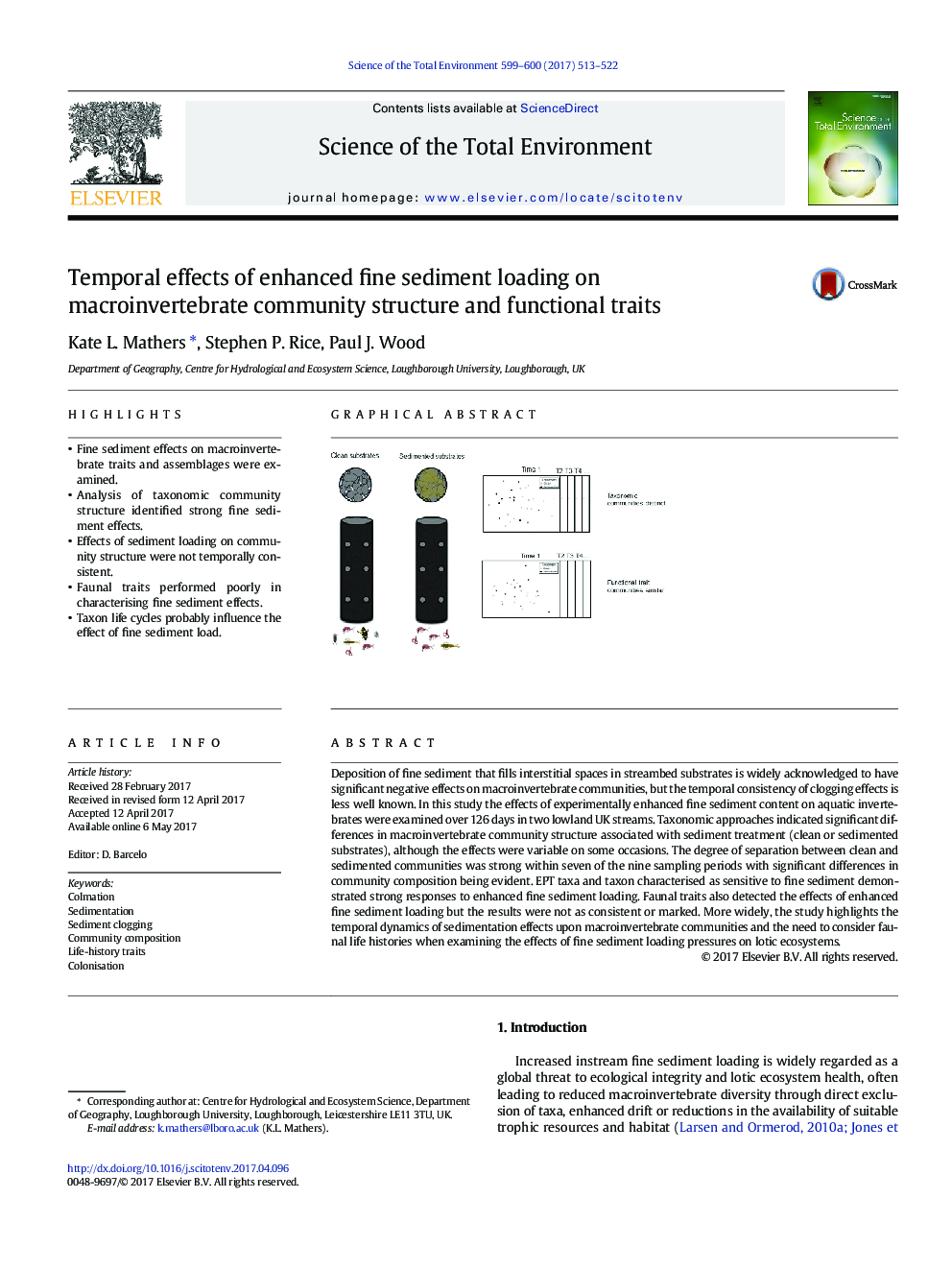| Article ID | Journal | Published Year | Pages | File Type |
|---|---|---|---|---|
| 5750516 | Science of The Total Environment | 2017 | 10 Pages |
â¢Fine sediment effects on macroinvertebrate traits and assemblages were examined.â¢Analysis of taxonomic community structure identified strong fine sediment effects.â¢Effects of sediment loading on community structure were not temporally consistent.â¢Faunal traits performed poorly in characterising fine sediment effects.â¢Taxon life cycles probably influence the effect of fine sediment load.
Deposition of fine sediment that fills interstitial spaces in streambed substrates is widely acknowledged to have significant negative effects on macroinvertebrate communities, but the temporal consistency of clogging effects is less well known. In this study the effects of experimentally enhanced fine sediment content on aquatic invertebrates were examined over 126Â days in two lowland UK streams. Taxonomic approaches indicated significant differences in macroinvertebrate community structure associated with sediment treatment (clean or sedimented substrates), although the effects were variable on some occasions. The degree of separation between clean and sedimented communities was strong within seven of the nine sampling periods with significant differences in community composition being evident. EPT taxa and taxon characterised as sensitive to fine sediment demonstrated strong responses to enhanced fine sediment loading. Faunal traits also detected the effects of enhanced fine sediment loading but the results were not as consistent or marked. More widely, the study highlights the temporal dynamics of sedimentation effects upon macroinvertebrate communities and the need to consider faunal life histories when examining the effects of fine sediment loading pressures on lotic ecosystems.
Graphical abstractDownload high-res image (79KB)Download full-size image
